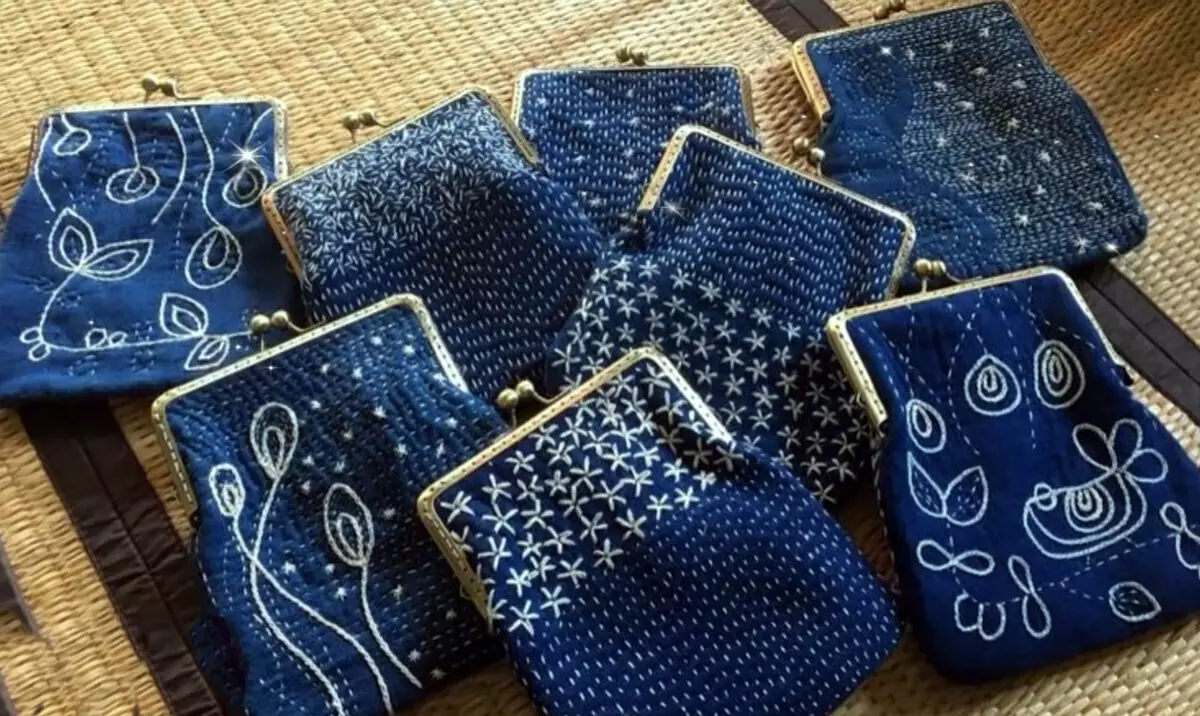It looks like Japan does not let me go. The culture of the Japanese always surprises and attracts their philosophy, style, the complexity of simplicity and especially in-depth reading of this world. Even in art, this people knew Zen.
Boro and Sashiko. Patch like art.
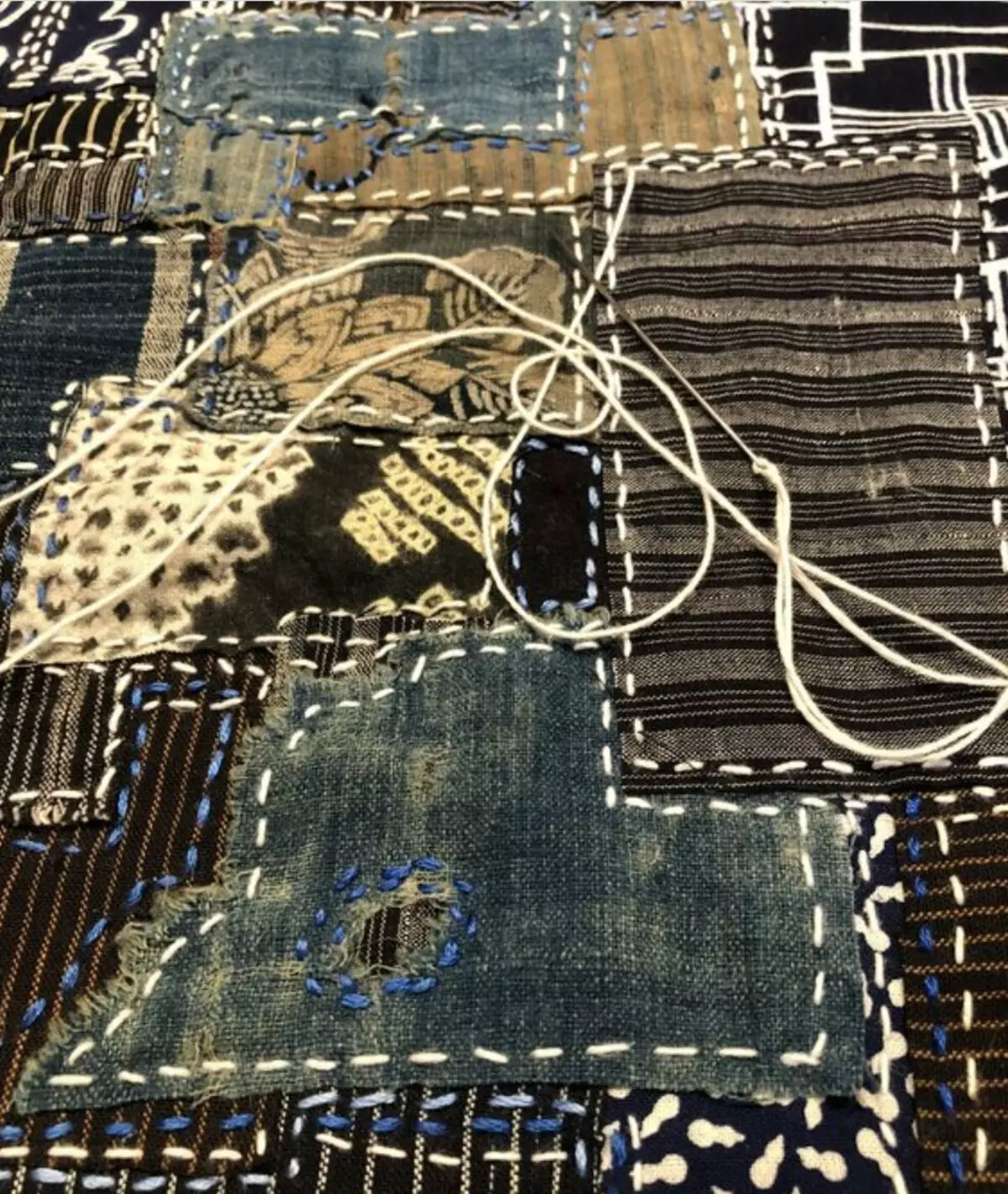
Photo from the Internet
17th century. The country is experiencing one of the most difficult times - the time of the Board of Clan Tokugawa. Japan is closed from around the world. Aumori Province is one of the coldest provinces. And to survive, people needed to warm, insulating and sealing their kimono. Trade fabrics has decline. These were poor segments of the population. They were forced to walk in the same clothes. The old futon was shot (in Japan, there was always a careful attitude towards things and resources), what was possible was cut into a patch and attacked. Kimono was so highly sewn that some of them moved from his father to his son. Those kimono, which were best made and preserved, are represented now in the best museums of the world. Now it is the national pride of Japan and a bright, distinctive feature in the world of art.
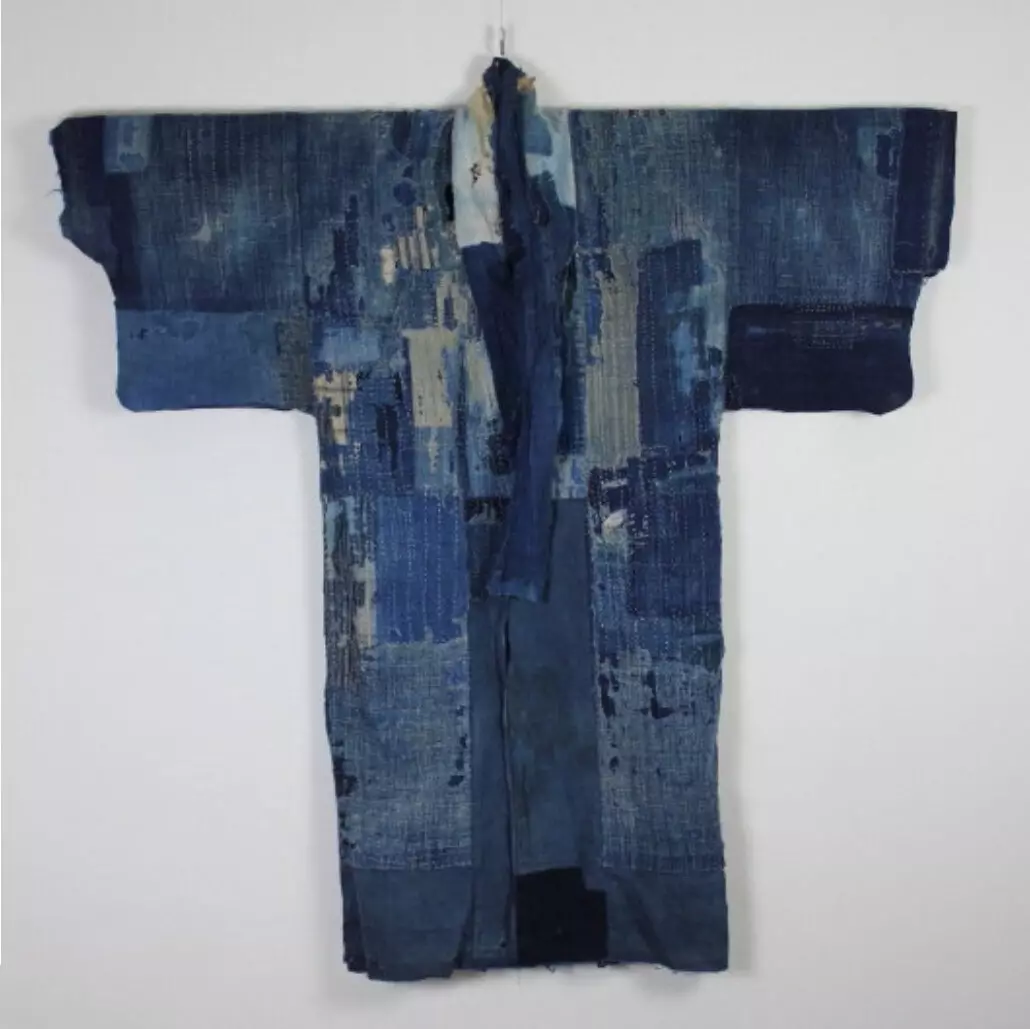
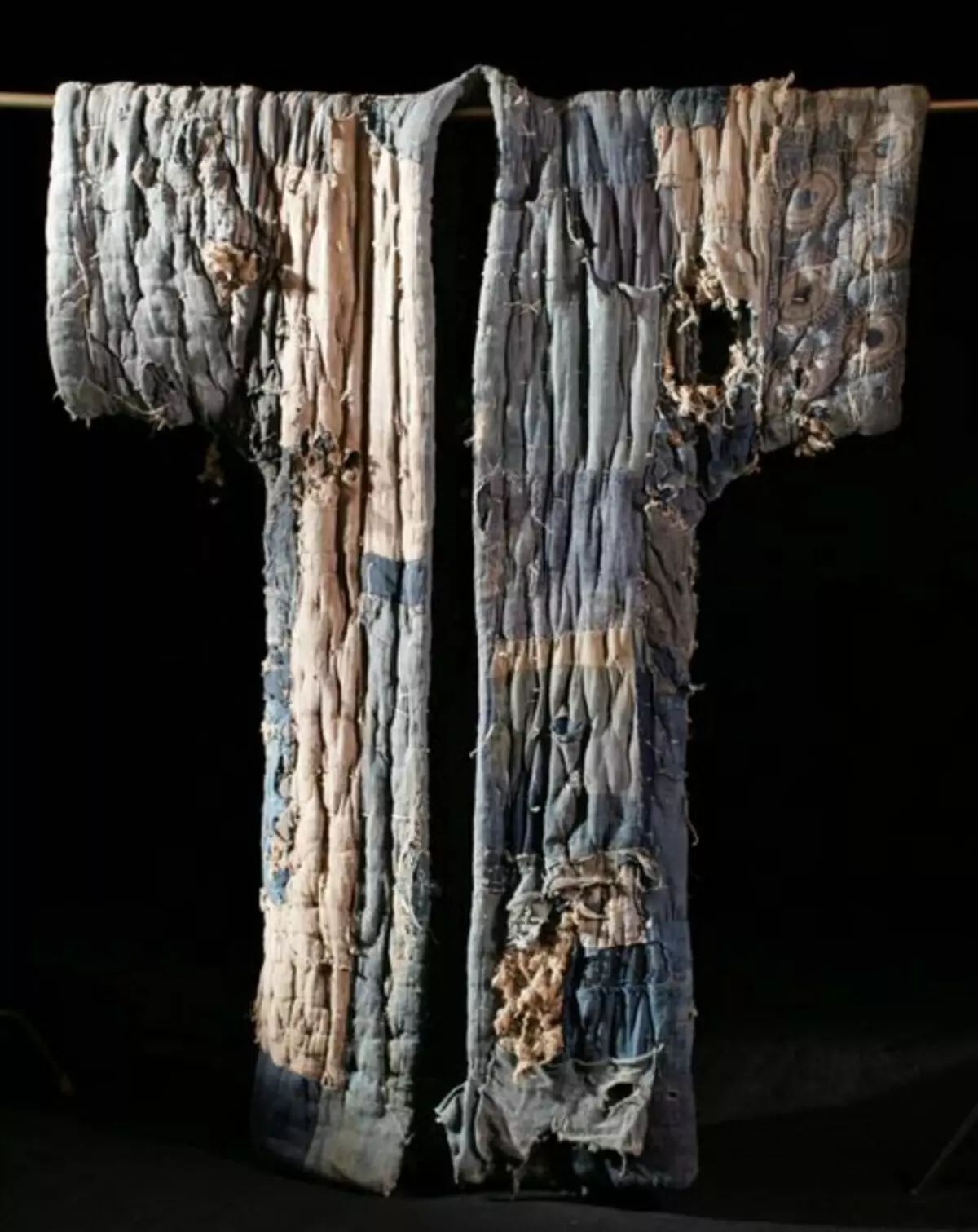
Exhibits from Amuse Museum. Chuzaboro Tanaka Collection (Photo taken from the Internet)
So what is Boro, and what is Sashiko?
Boro - first of all the multi-layeredness and it is its main definition
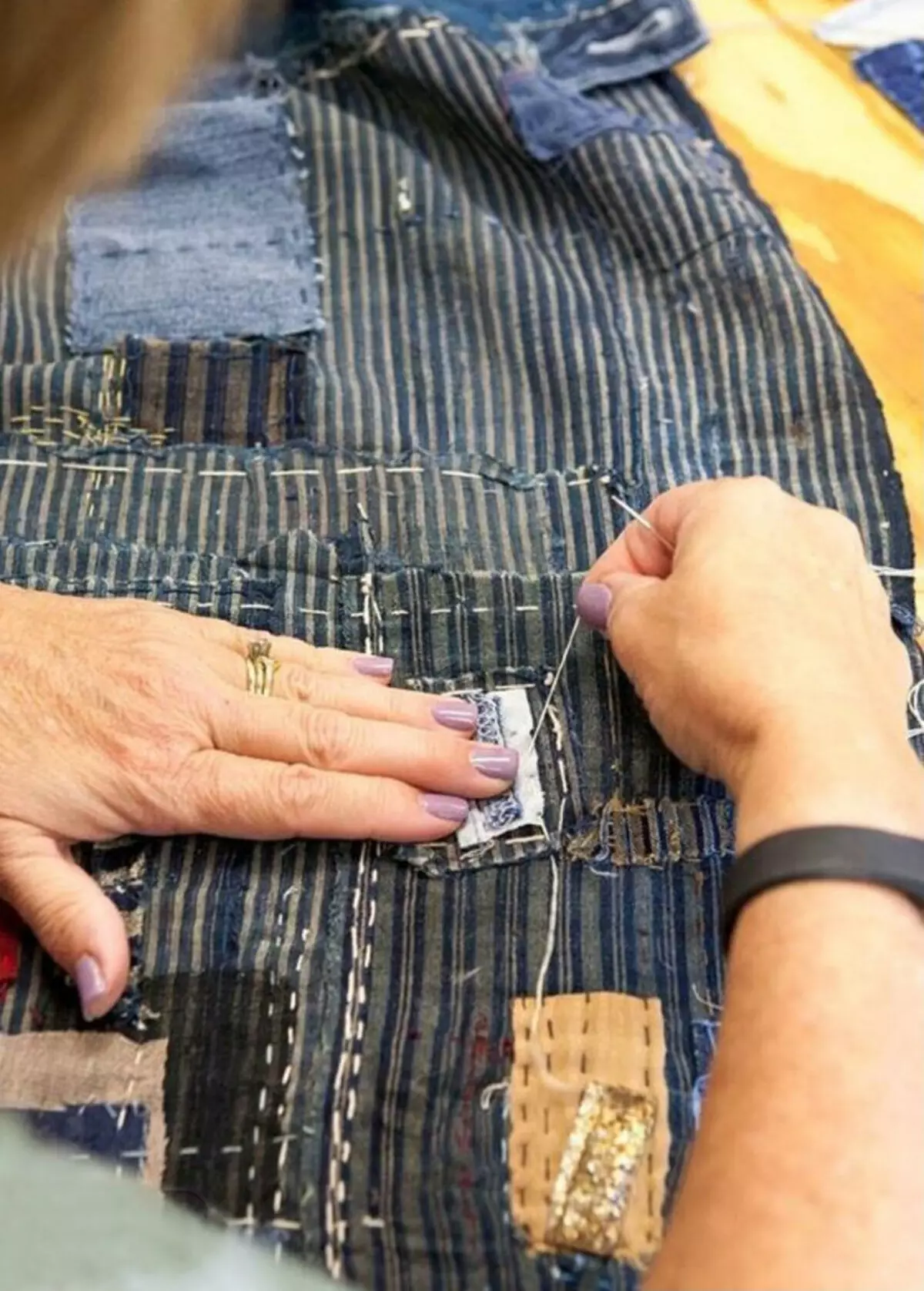
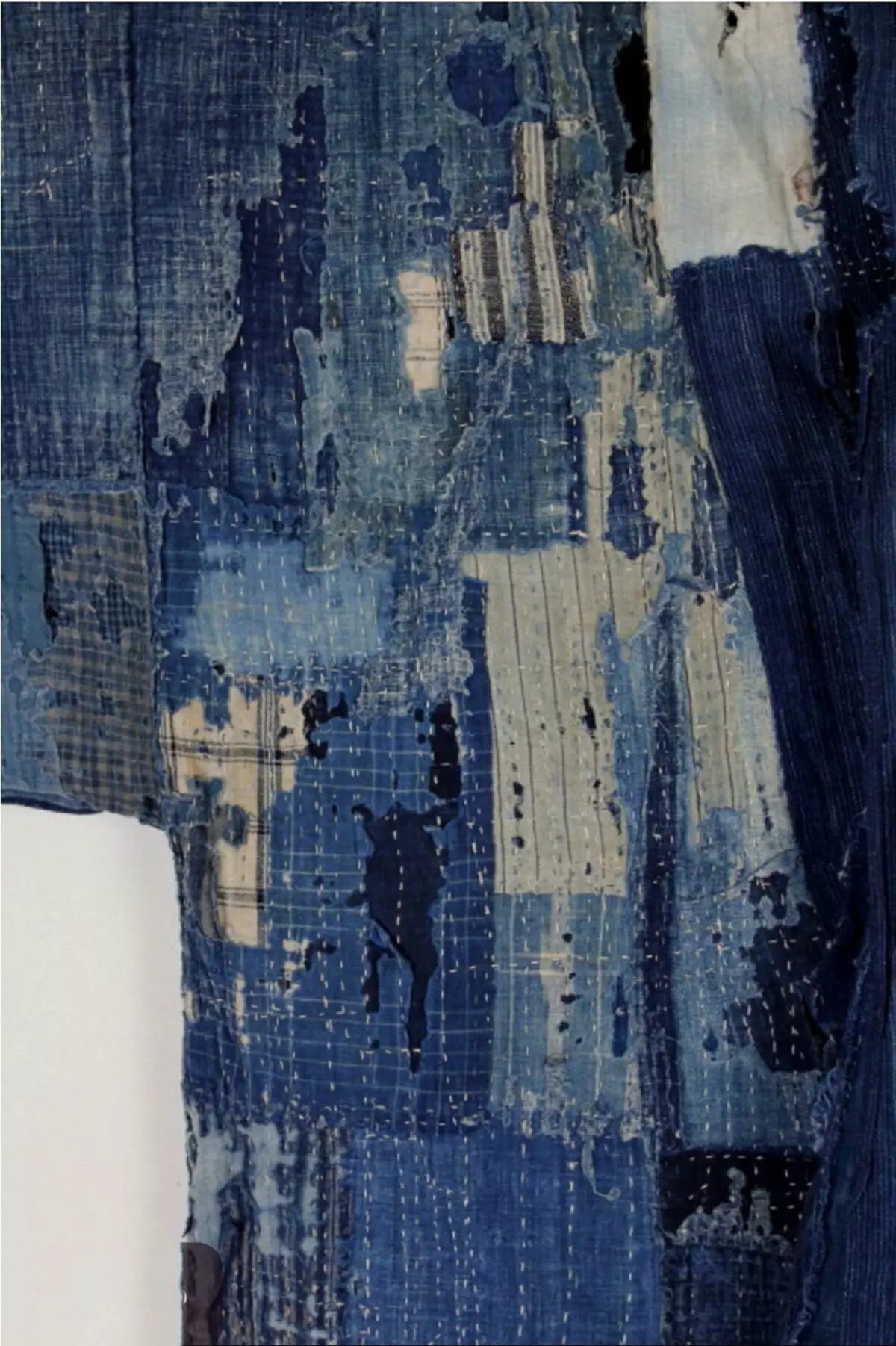
"Old View" - a special chic
One patch must go to another to another, i.e. One or two patches - not yet borough. This is a kind of constructivism, sending, this is a function. Mahen edges are very characteristic of him. And Sashiko seal all this stitch
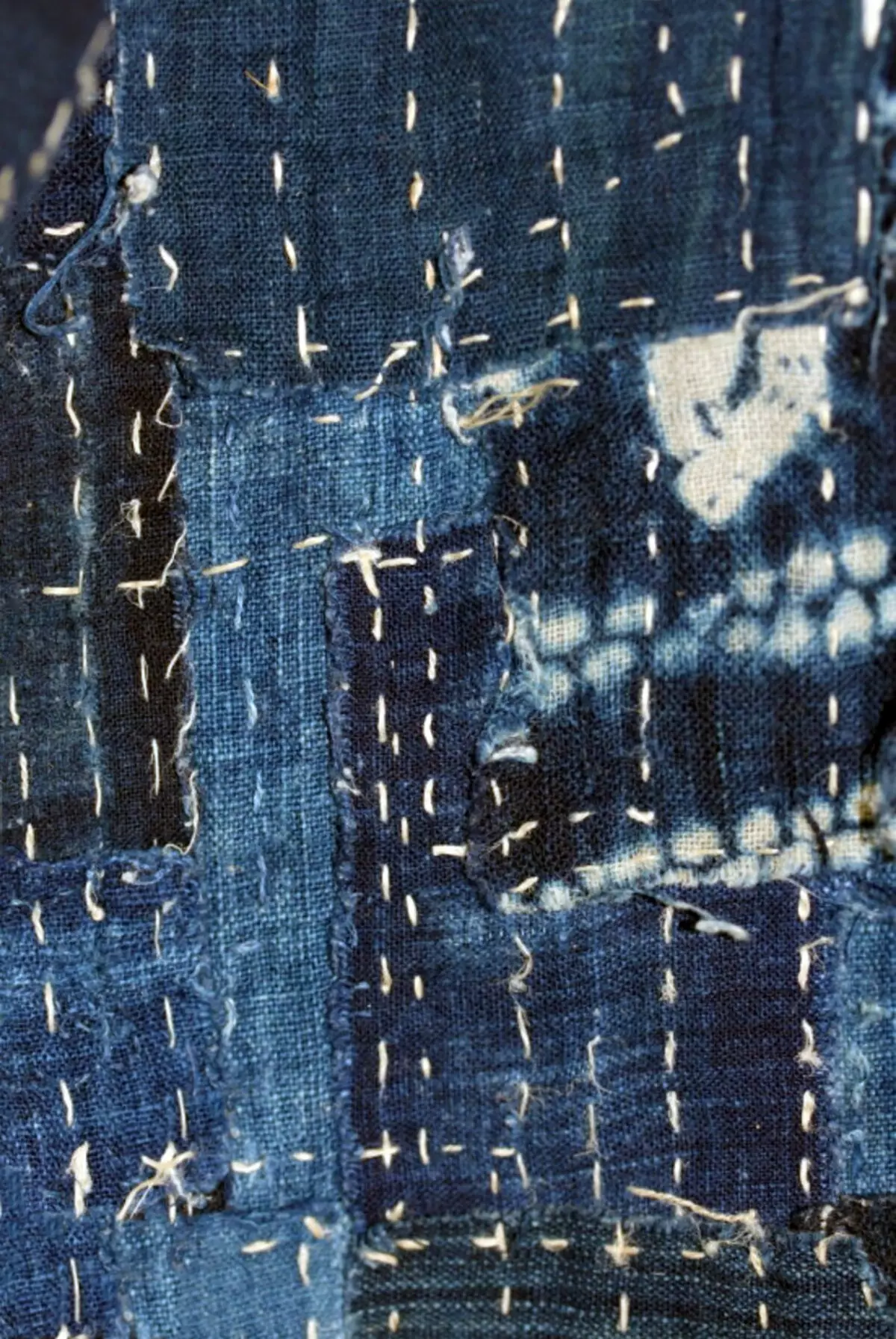
Sashiko and Boro are combined here with chibari staining
In Japanese culture, Boro and Sashiko go hand in hand. It all started like a fashion for the poor: only blue and gray, and all the best for samurai and their wives. But today Boro carries a completely different promise. This style and price. Very high price. Now is a fashion for wealthy people. In modern Japan, these techniques have handed over time. And now this kind of art returns to its origins with a rapid pace.


Products of the famous Japanese designer Mutsu (photo from the Internet)
Sashiko. In essence, it is a seam "forward needle."
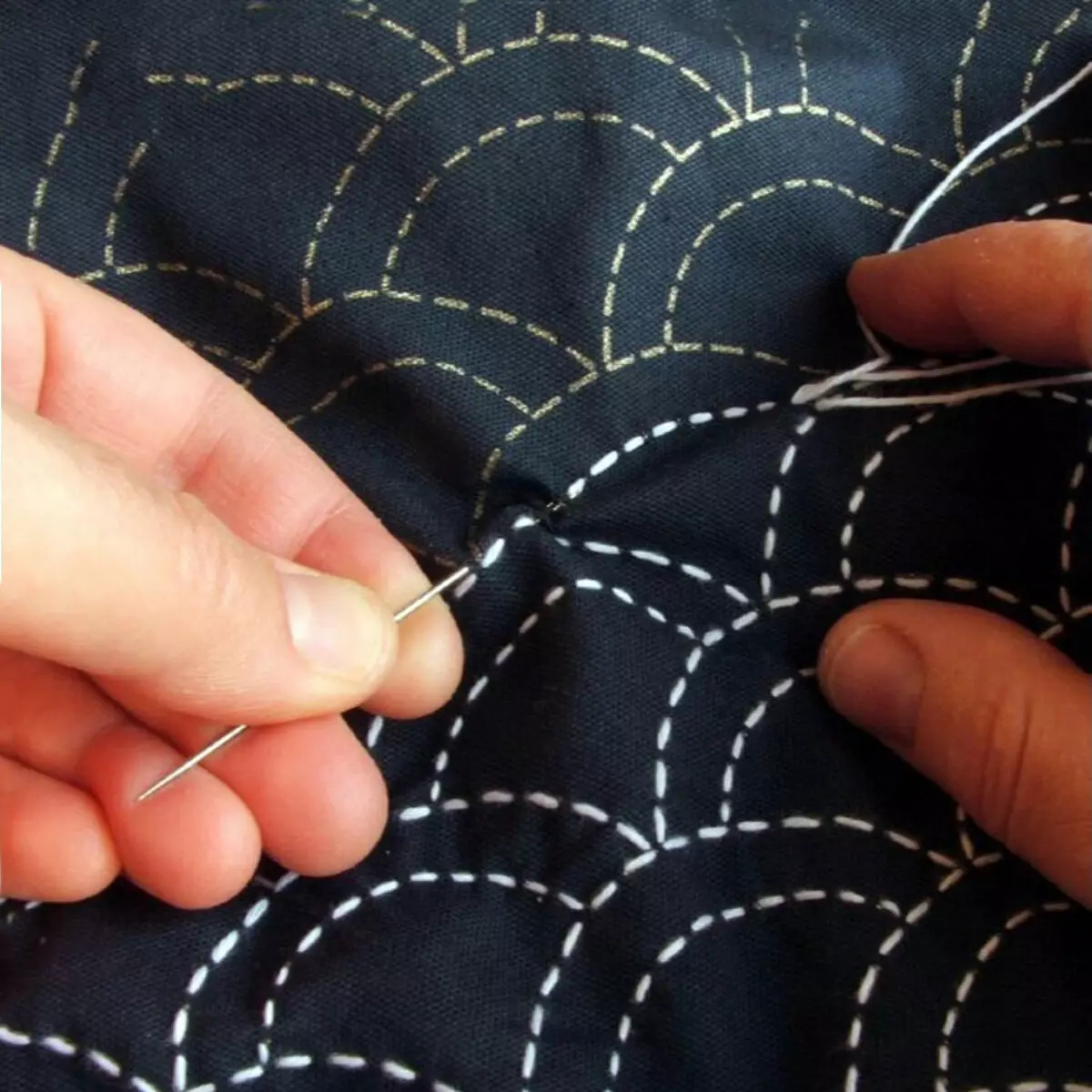
Japanese version of the needlework "coloring" (photo from the network)
Translated from Japanese, he literally means "little blows", Sasu is "piercing". In Russia, this seam is called note. In Japanese technology, it is performed by thick threads, i.e. Threads themselves for Sasisiko are twisted from 4 threads. Soft twist. And this is not Moulin.
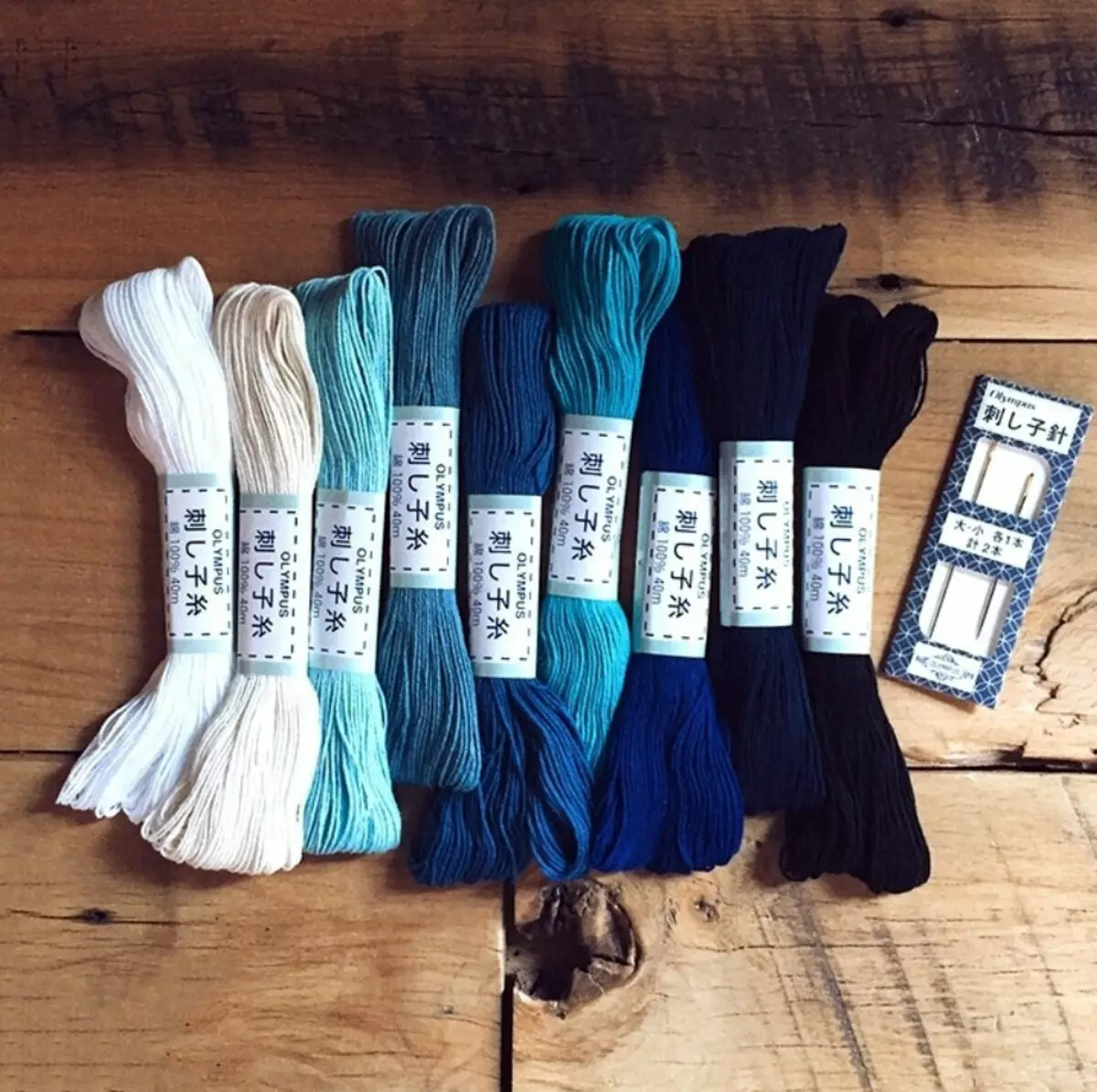
For threads are used cotton, flax, flax cotton, cannabis cotton. (Photo from the network)
It is suitable for knitting. Classic traditional Sashiko is a blue tissue and white stitches. After all, the peasants were forbidden to wear bright clothes. And the only dye, which was available to them - the plant is a hustlee or polygonum. It is from it that the color of indigo (dark blue) is obtained. Stitches are drawn through. They should be the same and in size, and by passing. The main rule is never crossing stitches, always leave the distance at the crossroads of the ornament.
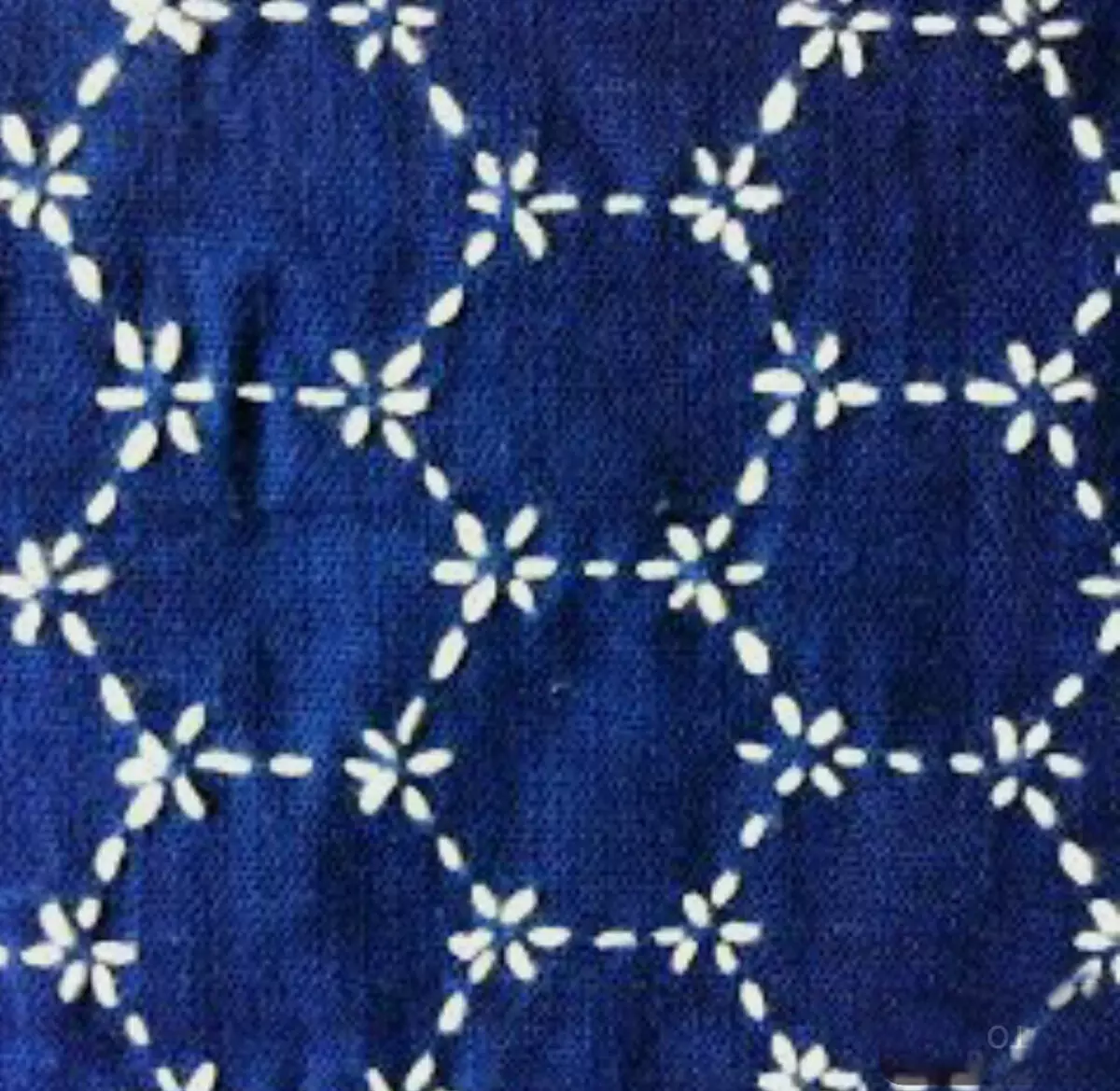
Photo from the network

Photo from the network
The traditional needle for Sashiko is long enough, 5 cm. Together with her, the Japanese use a special thimble, made of leather and metal to push the needle through the cloth. The length of one thread should be switched to exactly one row. Noticeable nodules are not allowed, even on withc.
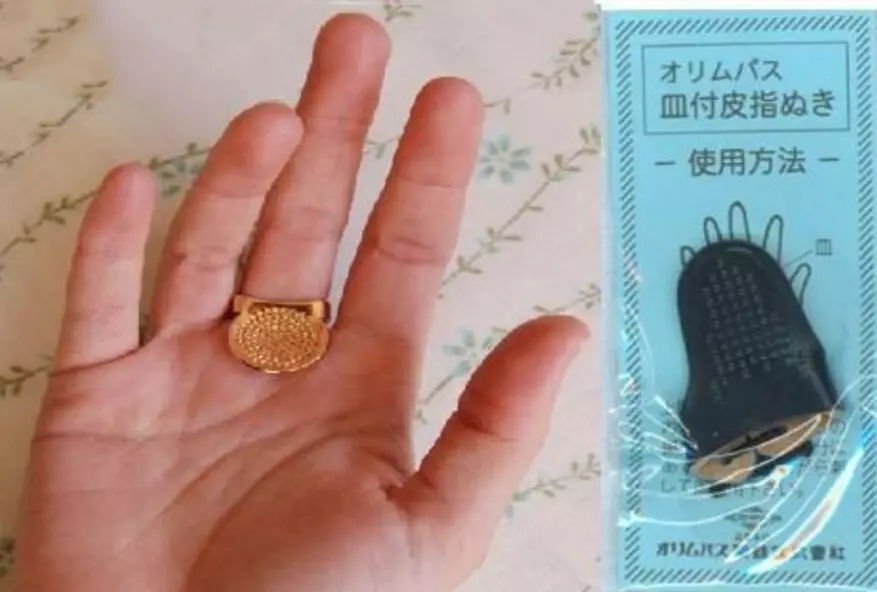
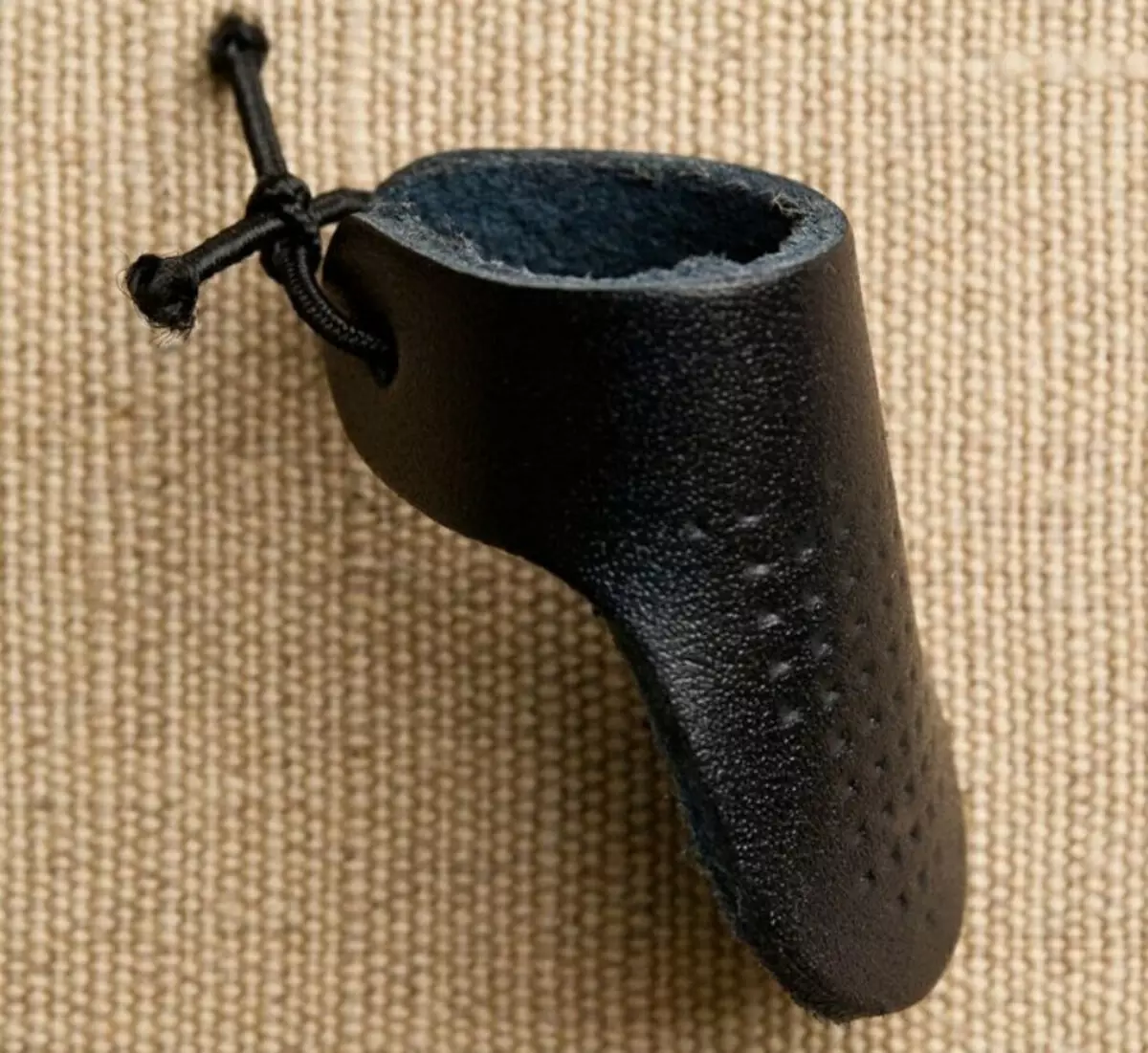
Photo from the network
From theory to practice
Of course, Boro / Sashiko is perfect need experience. This only at first glance it seems that everything is simple. In this I was convinced myself. I made my Boro and Sashiko on ordinary jeans from Denim. He took a white cotton thread from the remains of their yarn and the usual long needle.
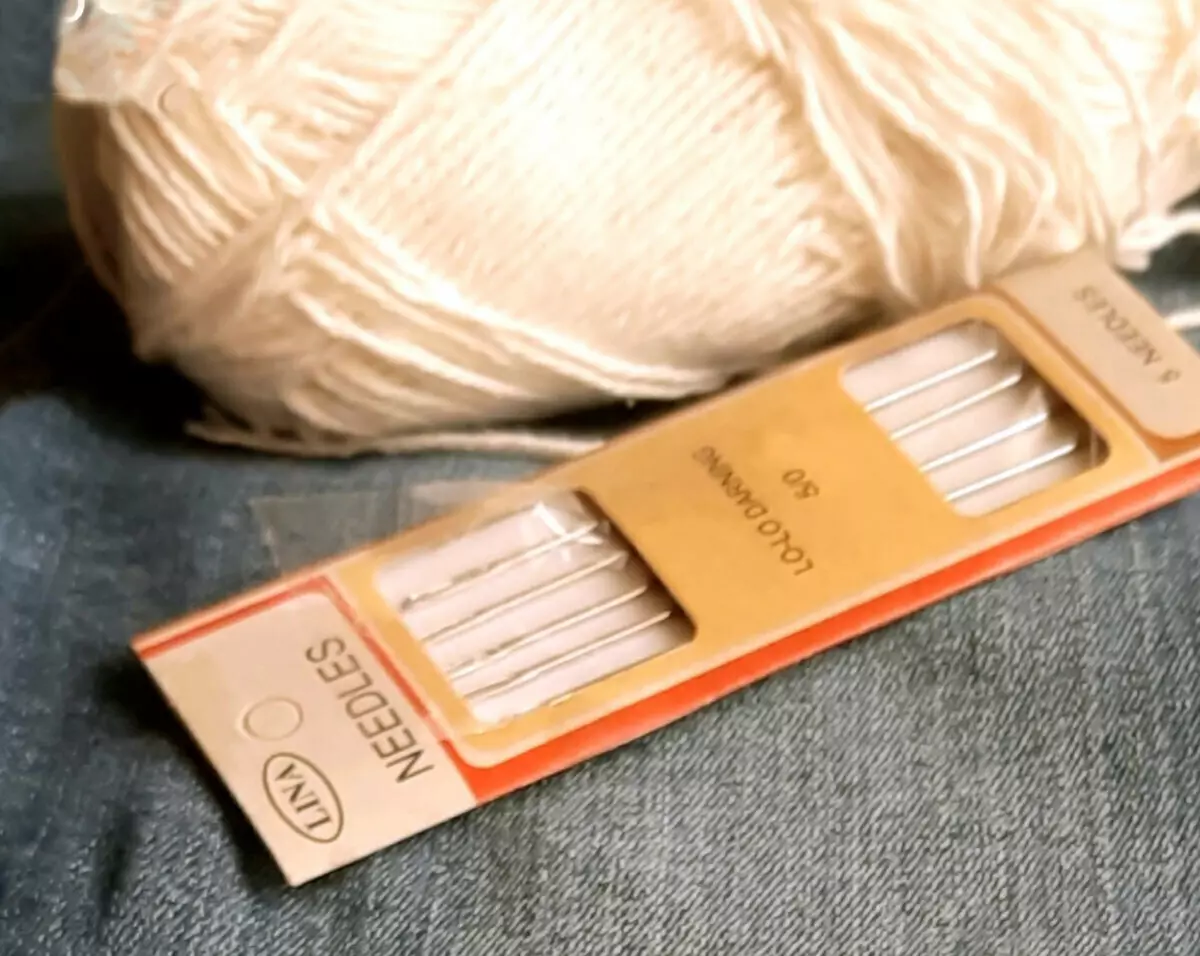
Applied the drawing, which was conceived. I have he arched. And started embroidery.
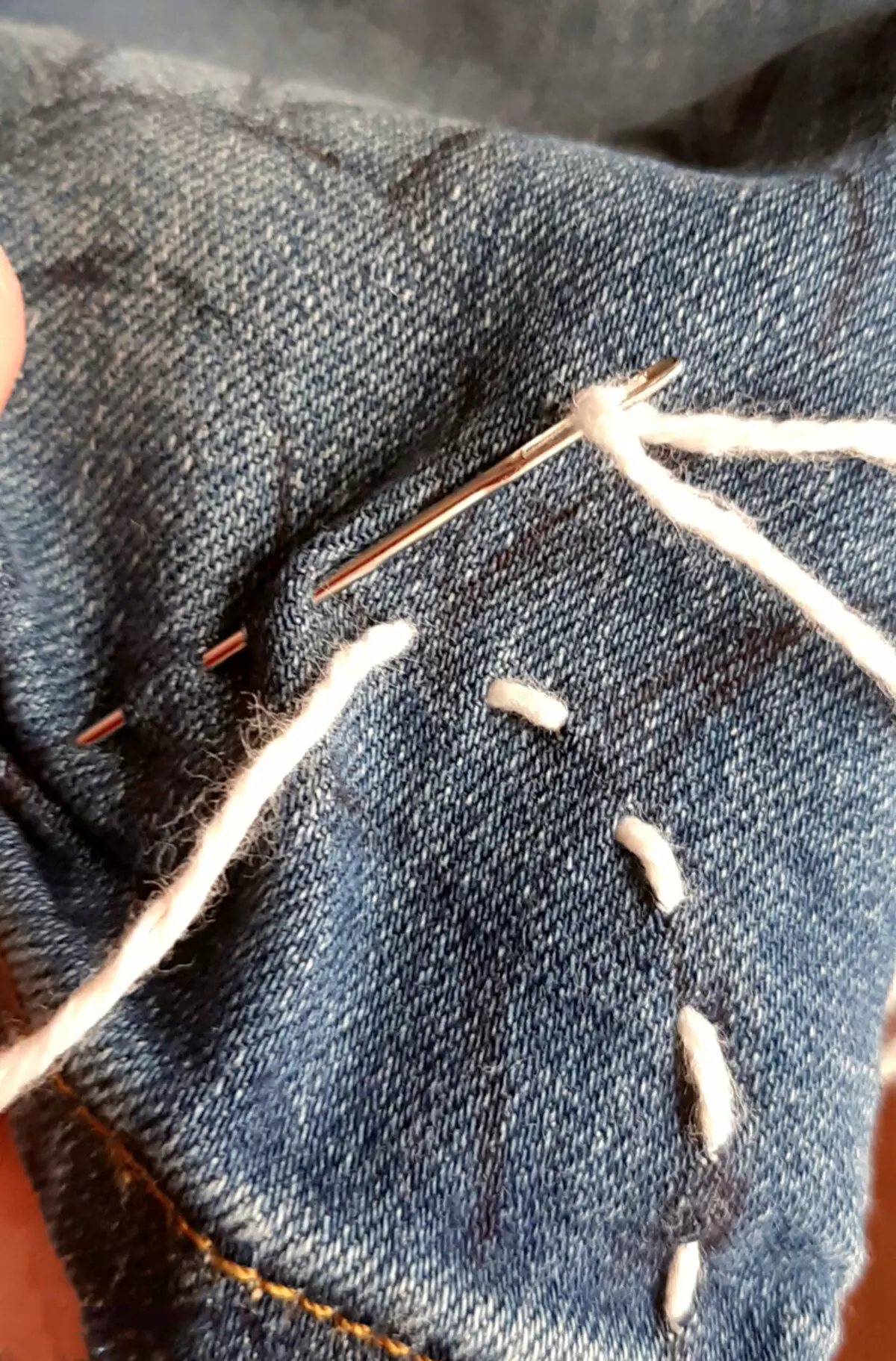
Knitting threads, of course, are slightly fat for Sashiko, but but
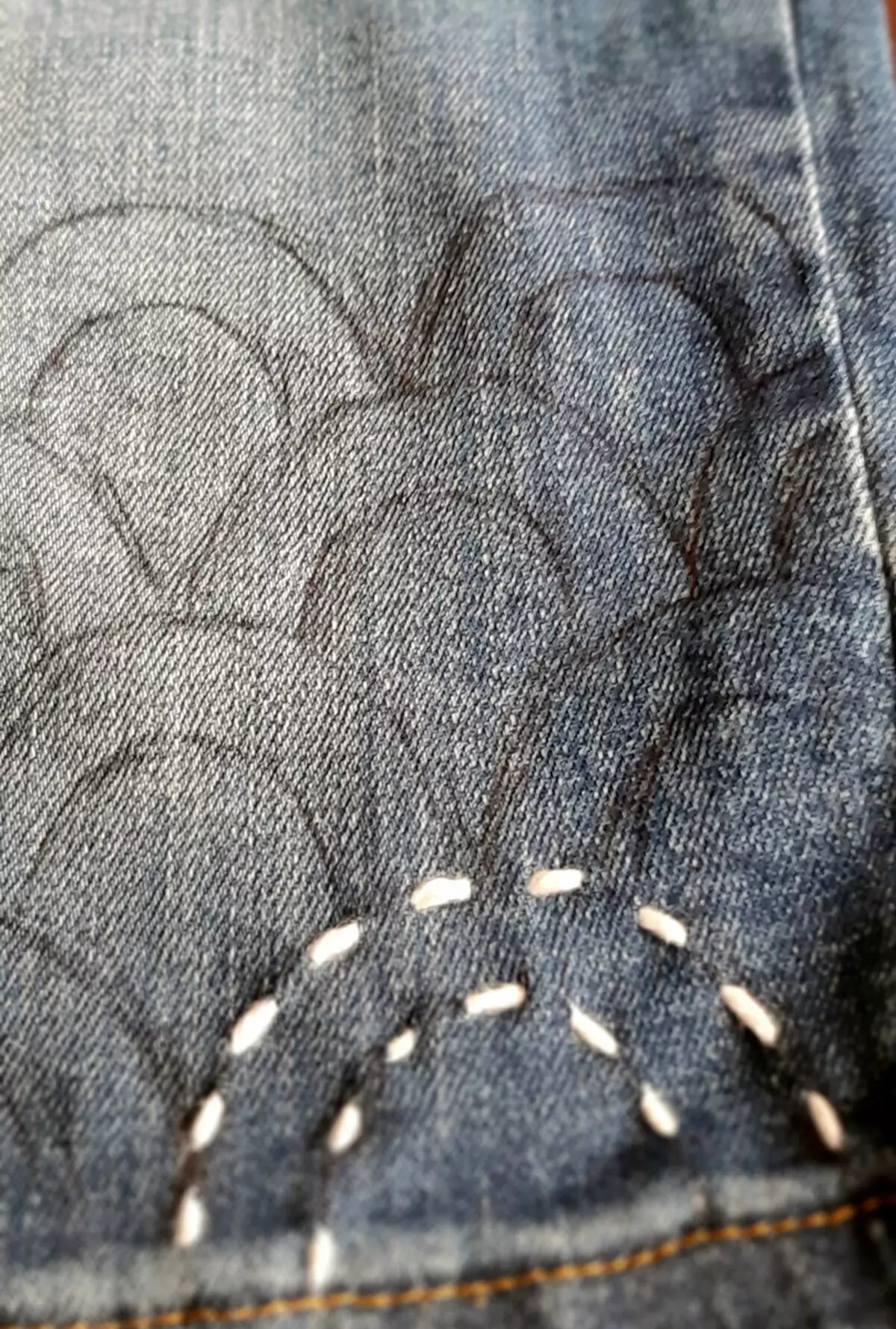
The drawing on the jeans turned out to be cryption, but it is still lifted
The process is so tightened that on one ornament I did not stop, also added accent as a fish. It turned out quite interesting Sashiko.
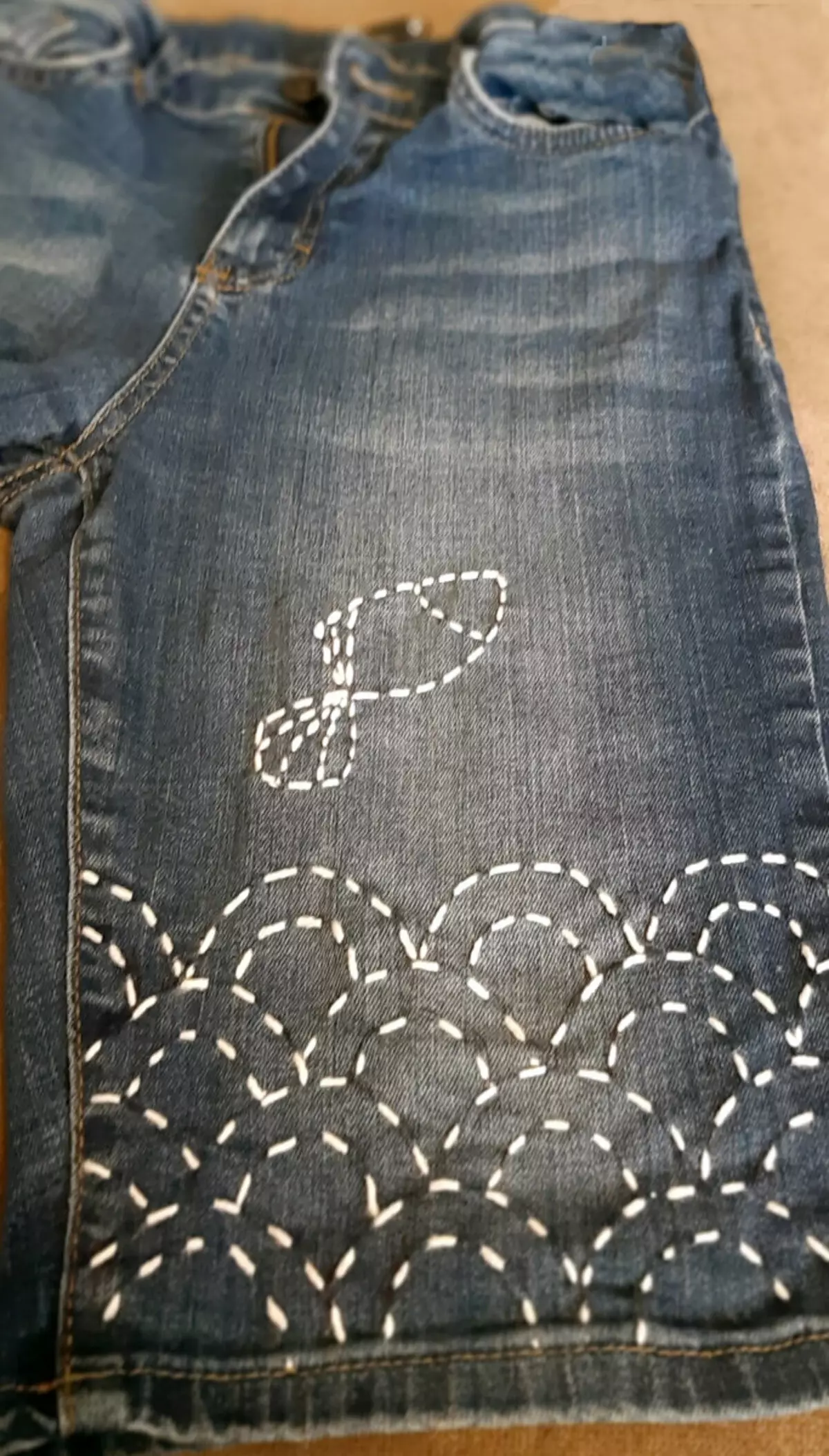
Boro, I also improvised the tissue remnants, and rather old cotton shirts. I just cut the squares (all of them 4) and rustled them with a red cotton thread. I was pleased with the result!
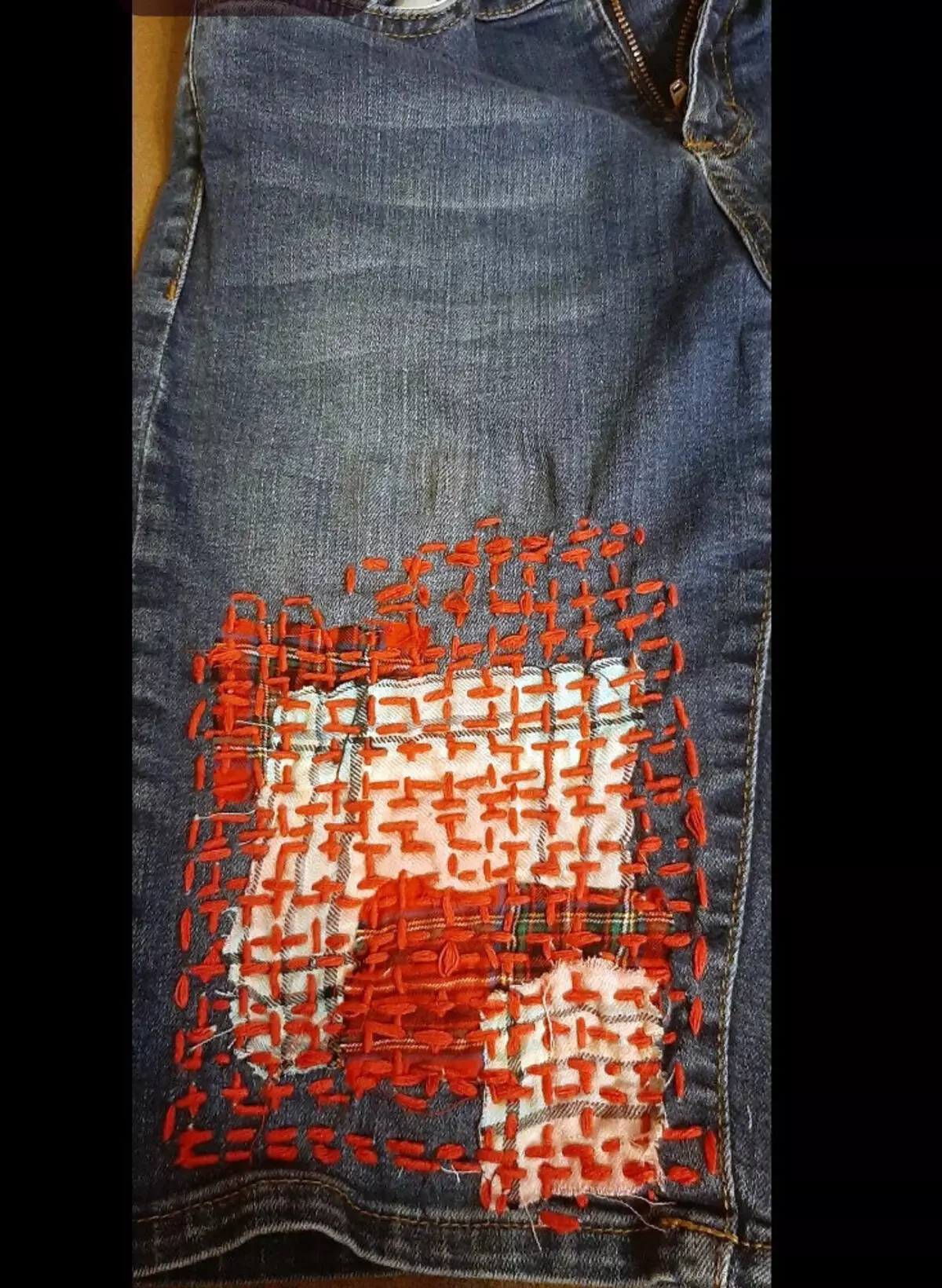
Traditional for Japan combination blue with red
I will be fair to you, that in plans I already have a couple of projects that I want to implement. This Japanese duet inspired me! See what bright diversity today presents this direction of embroidery and reasonable "utilization" of remnants of unnecessary clothing.
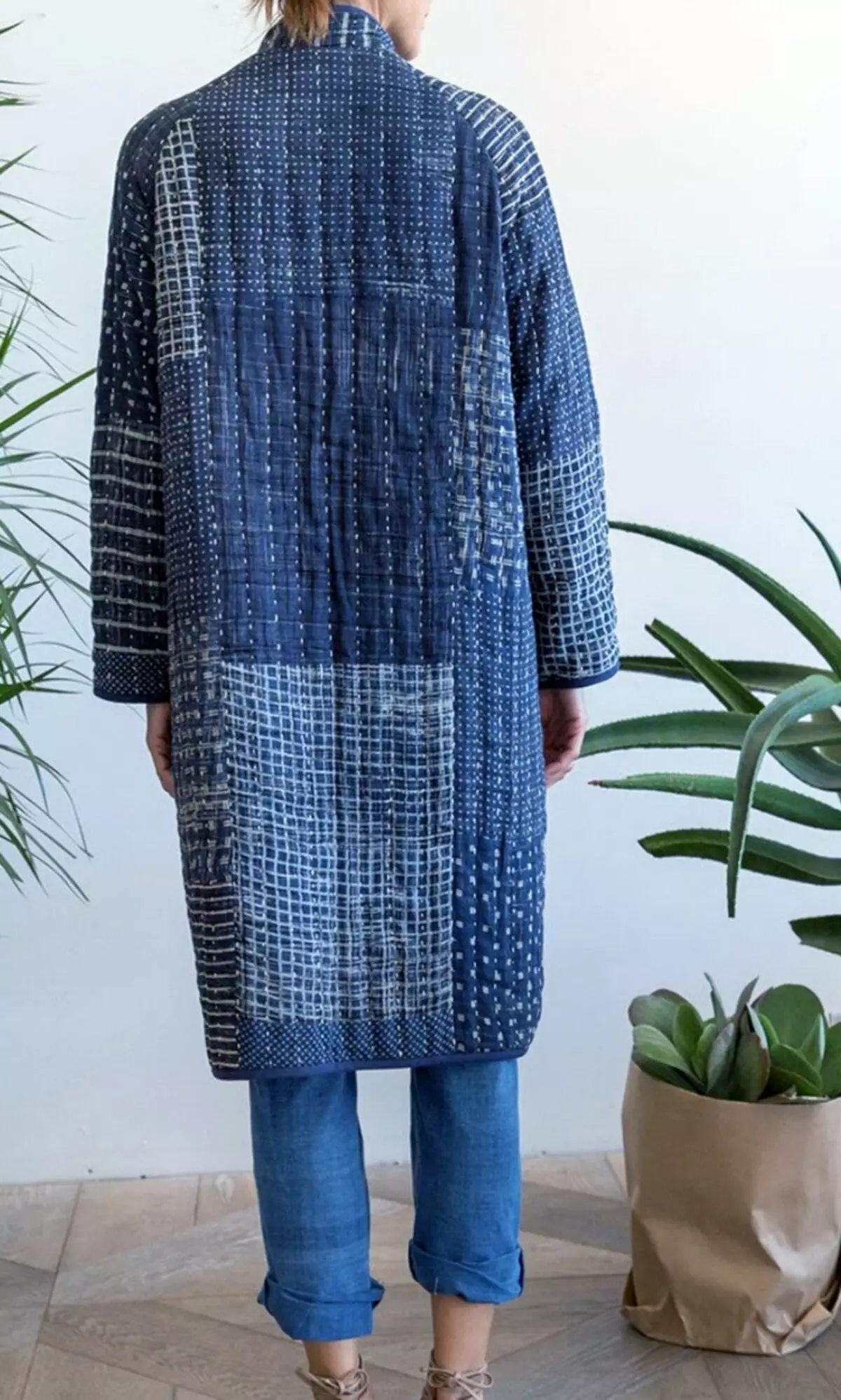
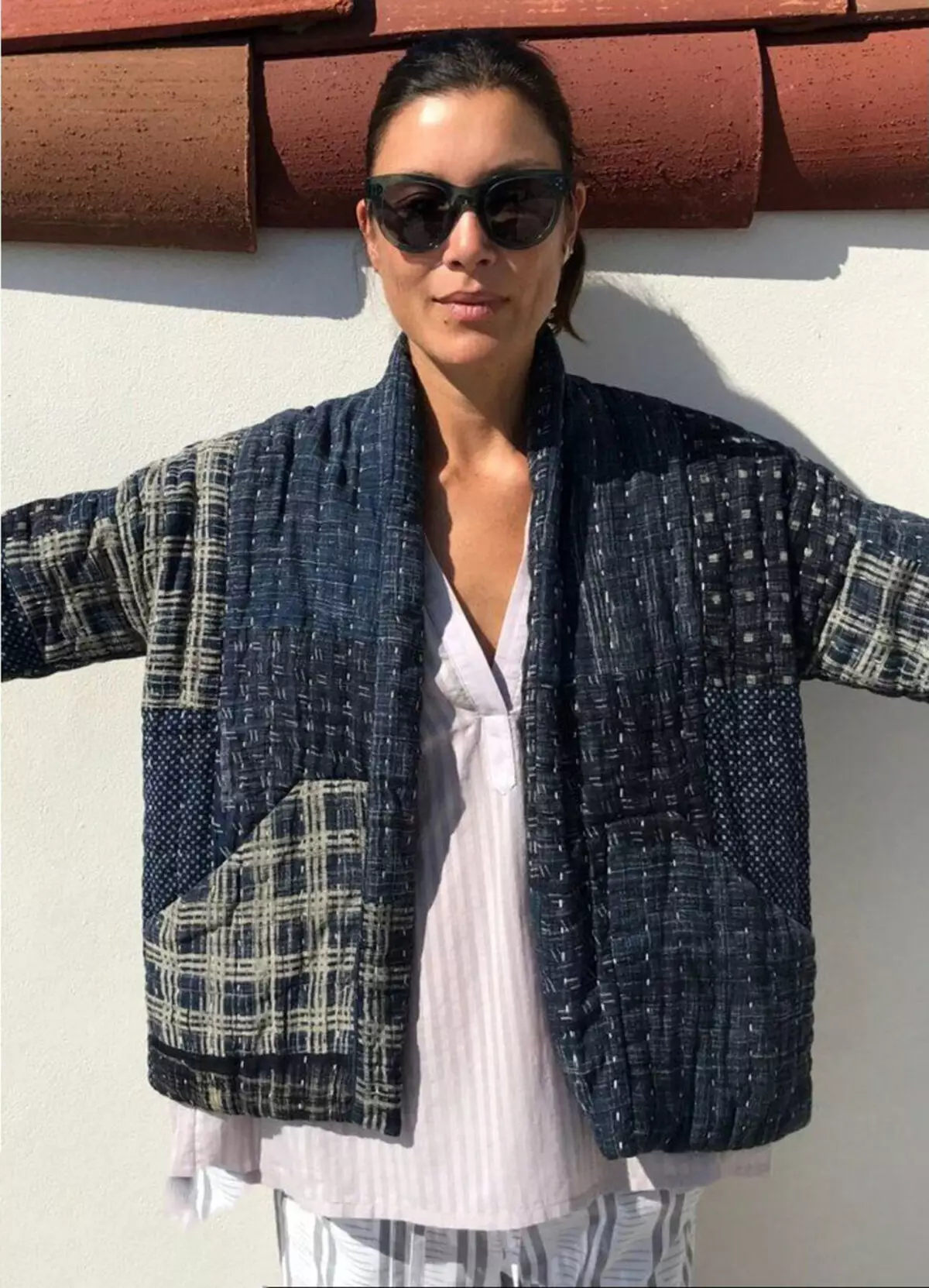
Contemporary option Kimono (photo from the Internet)
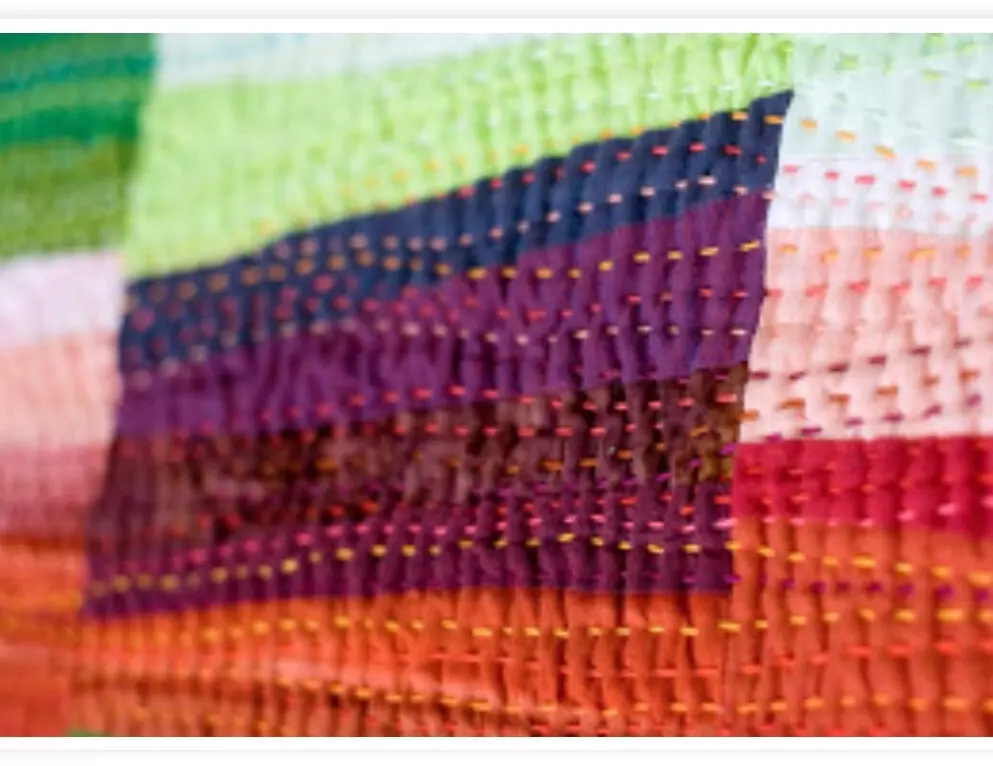
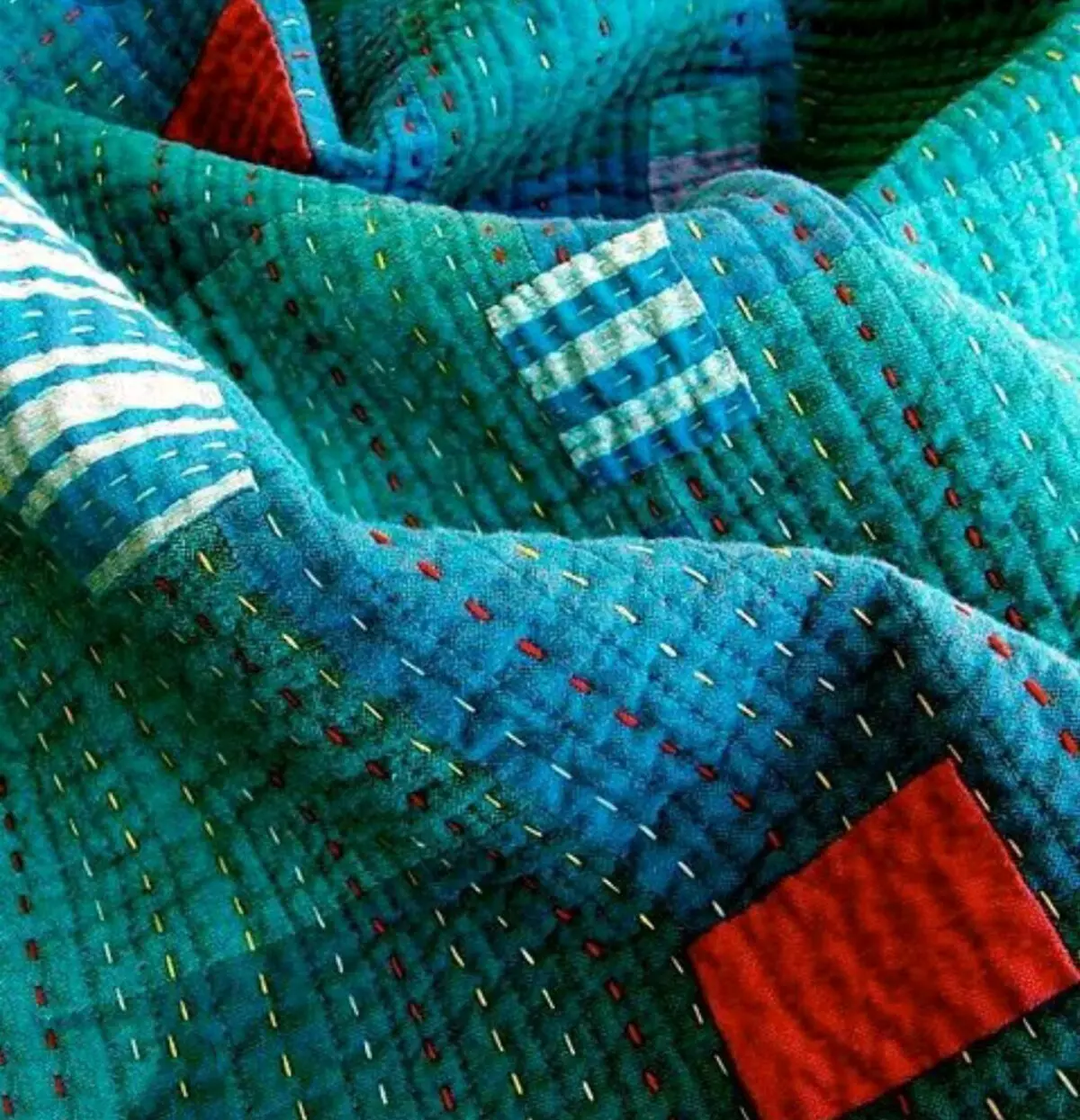
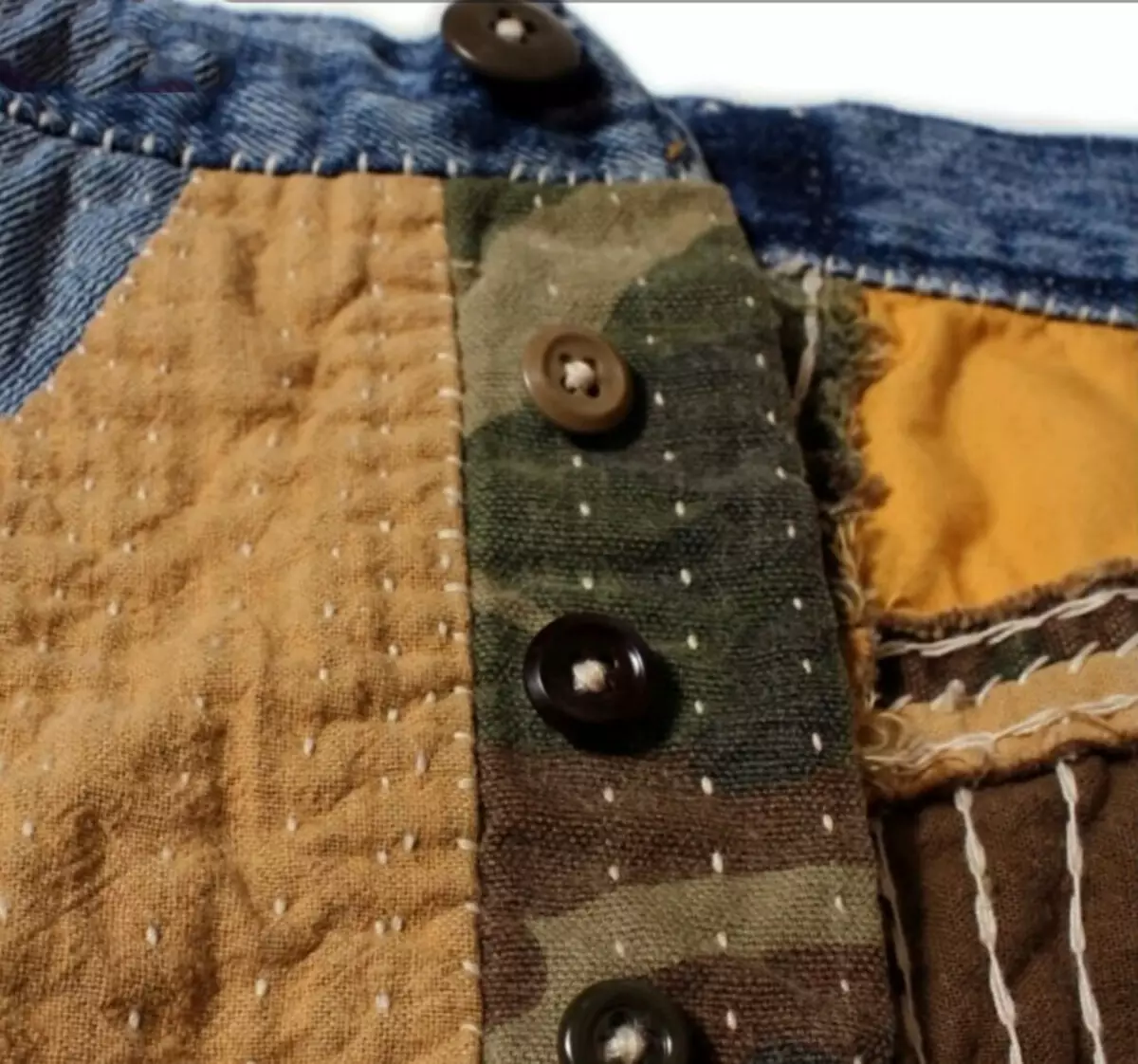
Having tried once, you will definitely replenish your wardrobe or an accessory or an upgrade of the thing that you did not know where to wear and what to wear, because you feel sorry to throw out. Oh, these wise Japanese!
